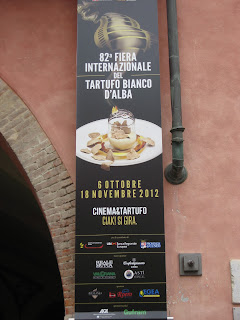 |
| Venice, The Doge's Palace (Italy) |
Welcome again on My Own Italy to discover Italy with My Personal Touch!
It's very difficult for me to start my report today, because I'm going to describe one of the very symbol of Italy: the Doge's Palace in Venice!
 |
| Venice (Italy) |
I must say that when you arrive in Venice, you are inebriated: the city is beautiful, full of colors, smells, sounds ... So many emotions and things to see and visit!
So I will choose for you the Doge's Palace.
 |
| View to the lagoon from the Doge's Palace (Venice) |
 |
| Doge's Palace (Venice) |
For centuries it has played three roles: it was the residence of the Doge, the seat of government of the city and the palace of justice.
It is here that were taken many of the most important decisions that determined the fate of Venice and, sometime, even in Europe!
 |
| Doge's Palace (Venice) |
This impressive building has a feature typical of Venetian architecture: lightness!
 |
| The Council Chamber, Doge's Palace |
Spite of its large size, in fact, the polychrome decorations of the facade, the beautiful tracery of Gothic loggias like a precious stone lace give us back the image of an elegant structure.
Inside the Palace, you can visit the Doge's Apartements, the Insitutional Chambers, and also the Prisons!
It 's path that leaves you breathless, and, as for me, it was an extraordinary experience.
 |
| The Bridge of Sighs (Venice) |
I suggest to visit the corridor that leads over the Bridge of Sighs, built in 1614 to link the Doge’s Palace to the structure intended to house the New Prisons. Enclosed and covered on all sides, the bridge contains two separate corridors that run next to each other.
The famous name of the bridge Bridge of Sighs dates from the Romantic period.
 |
| The Bridge of Sighs, Doge's Palace (Venice) |
In the end, I hope you will have time enough to spend in the most fomous lagoon in the world.
 |
| My sons and I in the Courtyard of Doge's Palace, Venice |
Follow me: www.myownitaly.com
Ciao, Carlotta!


































